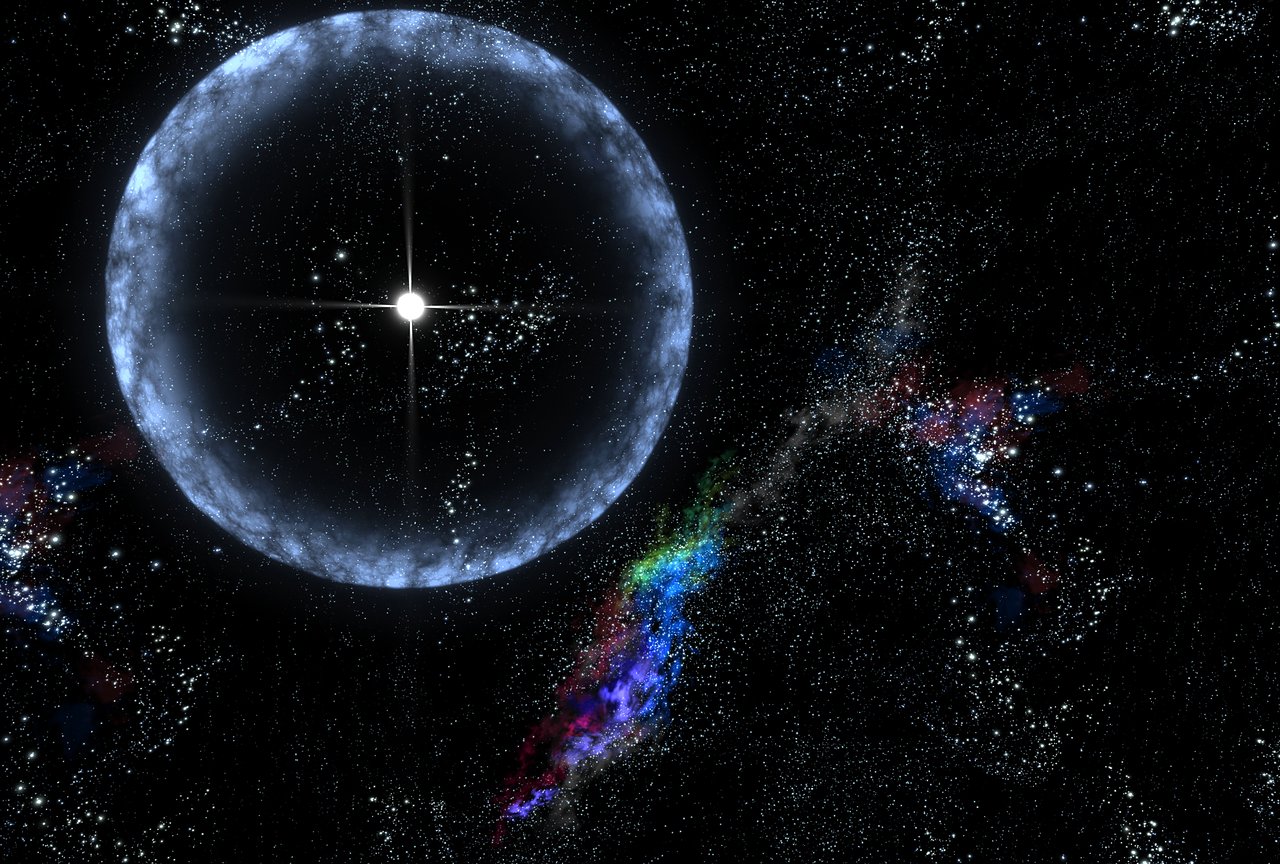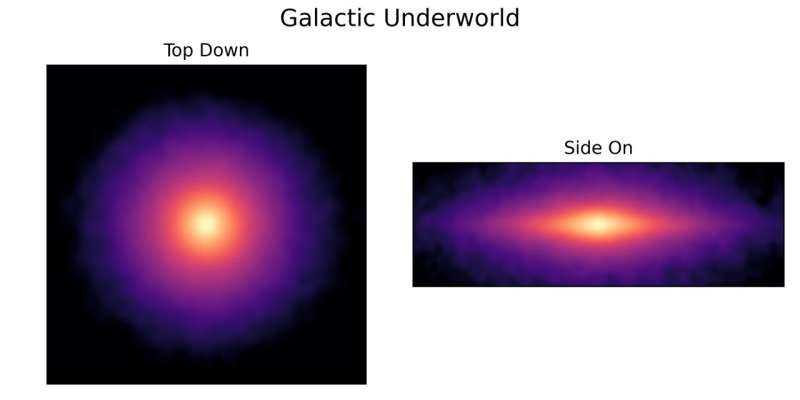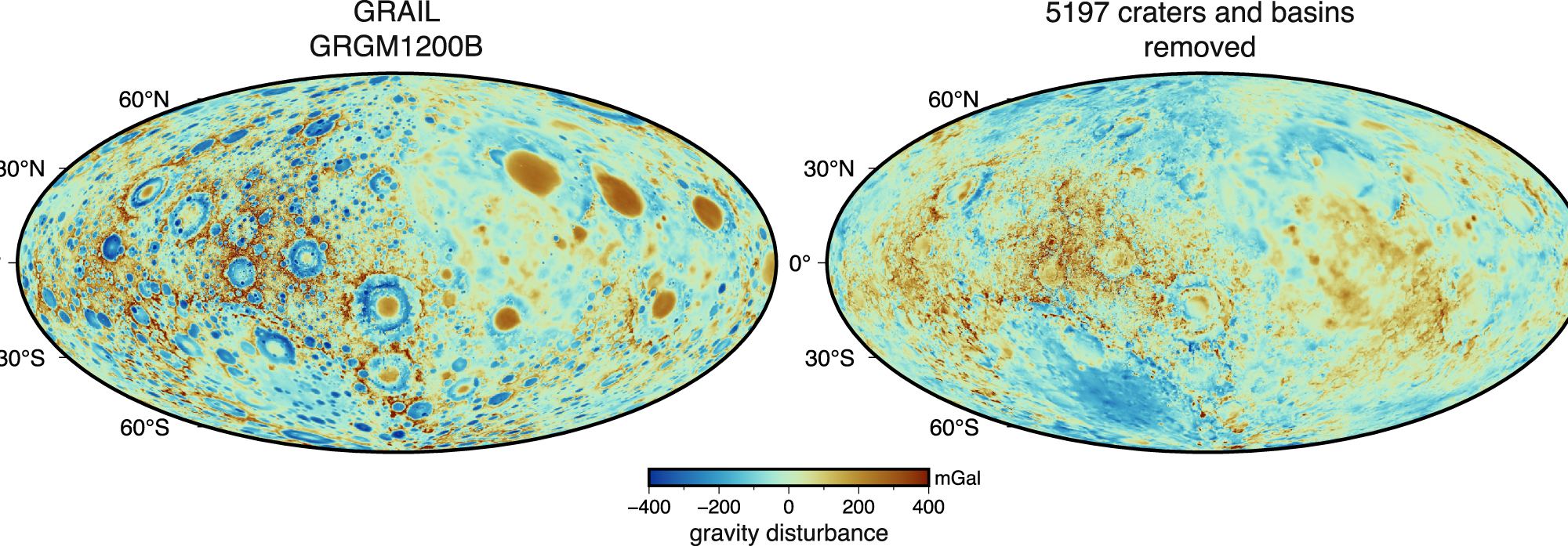If you think writing paper is expensive these days, be glad you didn’t live in the middle ages. Back then, paper was as rare as hen’s teeth, so good luck finding some to write one. But if you happened to be a monk, chances are there were plenty of old books made of parchment. Many of them have useless stuff like old star catalogs, so why not just recycle the parchment for your new copy of religious literature?
Continue reading “Scientists Find an Ancient Stellar Catalog Written by Hipparcus Hidden in a Medieval Tome”Astronomers Chart the Influence of Dark Matter and Dark Energy on the Universe by Measuring Over 1,500 Supernovae
In 2011, the Nobel Prize in physics was awarded to Perlmutter, Schmidt, and Reiss for their discovery that the universe is not just expanding, it is accelerating. The work supported the idea of a universe filled with dark energy and dark matter, and it was based on observations of distant supernovae. Particularly, Type Ia supernovae, which have consistent light curves we can use as standard candles to measure cosmic distances. Now a new study of more than 1,500 supernovae confirms dark energy and dark matter, but also raises questions about our cosmological models.
Continue reading “Astronomers Chart the Influence of Dark Matter and Dark Energy on the Universe by Measuring Over 1,500 Supernovae”Astronomers Think They Have a Warning Sign for When Massive Stars are About to Explode as Supernovae
Red supergiant stars are explosions waiting to happen. They are in the last stage of their life, red and swollen as they fuse heavier elements in a last effort to keep from collapsing. But eventually, gravity will win and the red supergiant core will collapse, triggering a supernova. We know it will happen, but until recently, we didn’t know when.
Continue reading “Astronomers Think They Have a Warning Sign for When Massive Stars are About to Explode as Supernovae”A Solar Gravitational Lens Will be Humanity's Most Powerful Telescope. What are its Best Targets?

One of the central predictions of general relativity is that a massive object such as a star, galaxy, or black hole can deflect light passing nearby. This means that light from distant objects can be gravitationally lensed by objects closer to us. Under the right conditions, gravitational lensing can act as a kind of natural telescope, brightening and magnifying the light of distant objects. Astronomers have used this trick to observe some of the most distant galaxies in the universe. But astronomers have also thought about using this effect a little closer to home.
Continue reading “A Solar Gravitational Lens Will be Humanity's Most Powerful Telescope. What are its Best Targets?”The Milky Way is Surrounded by a Vast Graveyard of Dead Stars
Everything dies in the end, even the brightest of stars. In fact, the brightest stars are the ones that live the shortest lives. They consume all the hydrogen they have within a few million years, then explode as brilliant supernovae. Their core remains collapse into a neutron star or black hole. These small, dark objects litter our galaxy, like a cosmic graveyard.
Continue reading “The Milky Way is Surrounded by a Vast Graveyard of Dead Stars”A Dwarf Galaxy Passed Close to the Milky Way and Left Ripples in its Wake

When you imagine the collision of galaxies, you probably think of something violent and transformational. Spiral arms ripped apart, stars colliding, cats and dogs living together, mass hysteria. The reality is much less dramatic. As a recent study shows, our galaxy is in a collision right now.
Continue reading “A Dwarf Galaxy Passed Close to the Milky Way and Left Ripples in its Wake”Jupiter’s Atmosphere is Surprisingly Hot
Jupiter is a big planet, but it’s still a planet. That means it doesn’t heat itself through fancy mechanisms like nuclear fusion. Its interior is heated through its own weight, squeezing the interior through hydrostatic equilibrium, and its surface is heated mostly by the Sun. Since Jupiter only gets about 4% of the light per square meter that Earth gets, you’d expect its upper atmosphere to be pretty cold. Traditional models estimate it should be about -70 degrees Celsius. But recent measurements show the upper atmosphere is over 400 degrees Celsius, and in the polar regions as much as 700 degrees Celsius. In the words of Ruby Rhod from the movie The Fifth Element, “It’s Hot Hot Hot!”
Continue reading “Jupiter’s Atmosphere is Surprisingly Hot”Life can Thrive Around Even the Smallest Stars
Photosynthesis is probably the most important chemical reaction for life on Earth. It is the process plants use to transform sunlight into energy it can use. Through it, plants can produce carbohydrates they can use (and we can eat when we harvest plants), generating oxygen as a by-product. Photosynthesis is why Earth’s atmosphere is about 20% oxygen. No photosynthesis, no life on Earth as we know it.
Continue reading “Life can Thrive Around Even the Smallest Stars”The Moon’s Poles Have “Wandered” Over Billions of Years
Until 1959, humans had only seen one side of the Moon. The Moon is tidally locked with Earth, and so we can only see one side from the Earth’s surface. It took the soviet Luna 3 spacecraft to capture a blurry image for humans to get their first glimpse of the lunar far side. Because of this, many people imagine that the Moon has always been this way. But as a recent study shows, that isn’t quite true.
Continue reading “The Moon’s Poles Have “Wandered” Over Billions of Years”It Appears That Enceladus is Even More Habitable Than we Thought
The problem with looking for life on other worlds is that we only know of one planet with life. Earth has a wondrous variety of living creatures, but they all evolved on a single world, and their heritage stems from a single tree of life. So astrobiologists have to be both clever and careful when looking for habitable worlds, even when they narrow the possibilities to life similar to ours.
Continue reading “It Appears That Enceladus is Even More Habitable Than we Thought”







